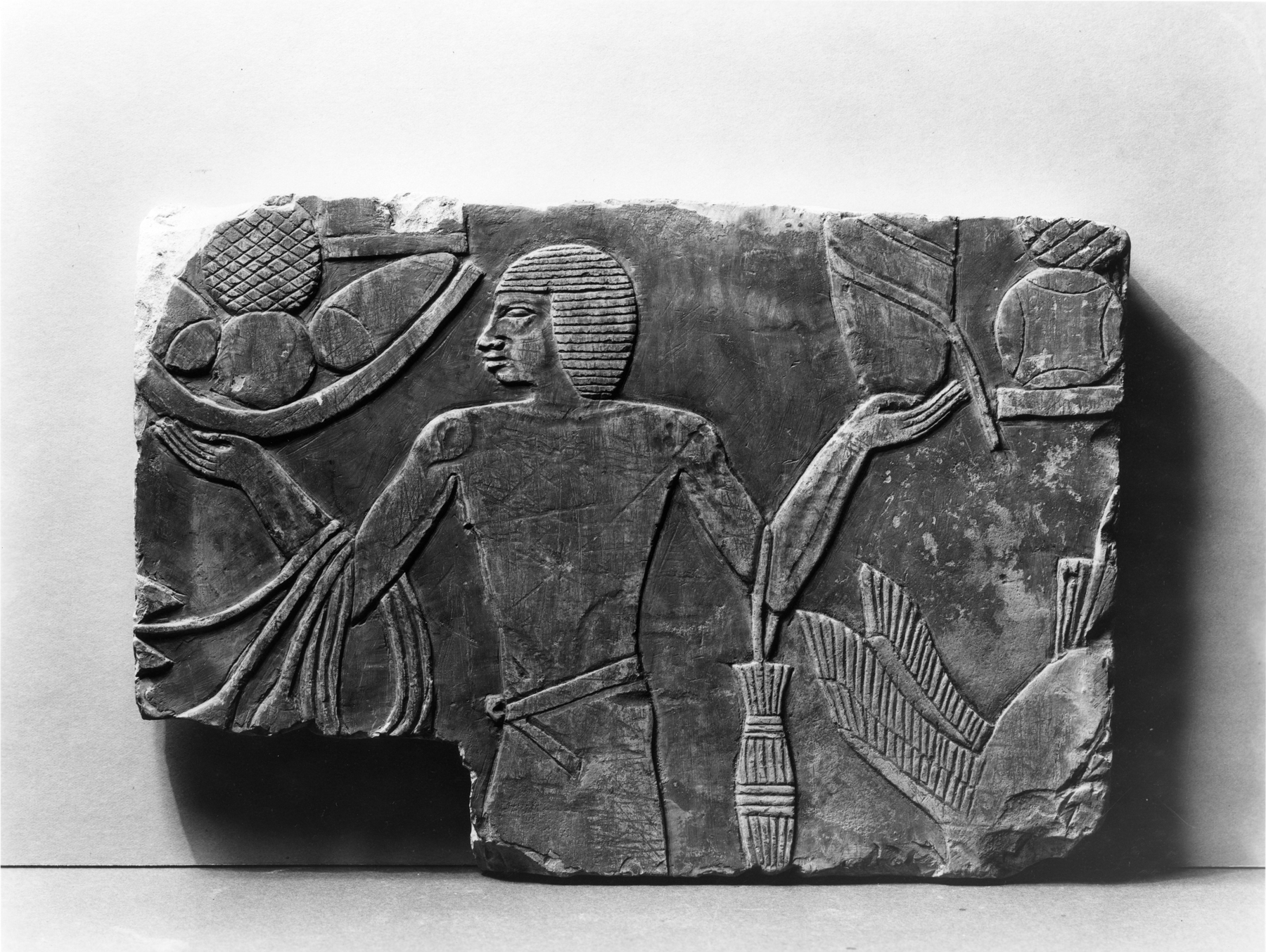Wall Fragment with a Man and Offerings
(Ancient Egypt and Nubia )
This wall fragment is carved in low relief and depicts a man to the left with offerings on each hand. This piece is said to be from Luxor but is probably from the Tomb of Nespeqashuty, 312, at Deir el-Bahri, and the same tomb as Walters 22.331.
Provenance
Provenance (from the French provenir, 'to come from/forth') is the chronology of the ownership, custody, or location of a historical object. Learn more about provenance at the Walters.
Dikran Kelekian, New York and Paris [date and mode of acquisition unknown] [as 18th Dynasty, Luxor]; Henry Walters, Baltimore, 1930, by purchase; Walters Art Museum, 1931, by bequest [object stolen October 14, 1975, later recovered and returned to the museum October 18, 1975].
Conservation
| Date | Description | Narrative |
|---|---|---|
| 1/1/1940 | Treatment | cleaned; repaired |
| 7/11/1967 | Treatment | cleaned |
| 6/24/1971 | Treatment | cleaned |
| 9/22/1976 | Treatment | cleaned; repaired |
| 10/23/1997 | Treatment | technical study; cleaned |
| 1/20/1998 | Technical Report | technical study; X-ray fluorescence; Infrared spectroscopy |
Geographies
Egypt, Western Thebes, Tomb of Nespeqashuty (312) (Deir el-Bahri) (Place of Origin)
Measurements
L: 11 7/16 in. (29 cm)
Credit Line
Acquired by Henry Walters, 1930
Location in Museum
Not on view
Accession Number
In libraries, galleries, museums, and archives, an accession number is a unique identifier assigned to each object in the collection.
In libraries, galleries, museums, and archives, an accession number is a unique identifier assigned to each object in the collection.
22.329



